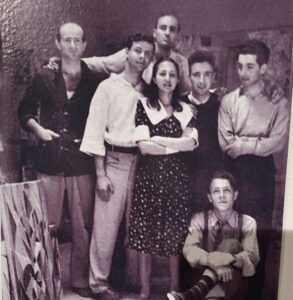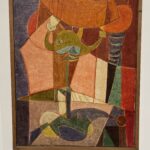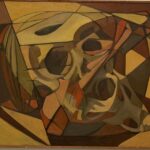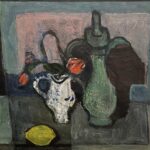Rome 1948 – Italian Art toward Israel
In the heart of Rome, at the Jewish Museum, 2023 saw the evocative exhibition “Rome 1948 – Italian Art toward Israel,” which retraces the post-war artistic initiative in support of the newly established State of Israel.
Curated by Giorgia Calò and Davide Spagnoletto, the exhibition – held from April 27 to October 10 – features a selection of around twenty works by Italian painters and sculptors, including still lifes, landscapes, and portraits. In 1948, these artists united cultural solidarity with a commitment to the Israeli cause. It is a tribute to the bond between Italy and Israel, born from the ashes of global conflict, where art becomes a tool of rebirth and connection between peoples.
The historical context of 1948 in Italy
1948 was a year of deep transformation for Italy, still engaged in the post-war reconstruction. This period was marked by major developments both politically and culturally.
Key events included:
-
The adoption of the Italian Republic’s Constitution on January 1, which opened a new chapter for the nation.
-
Participation in the Marshall Plan, in June of the same year, a significant step toward economic recovery and international integration.
These changes created fertile ground for renewed artistic ferment, strongly influencing exhibitions and cultural initiatives across Italy.
The artistic ferment in Italy in 1948
Italian artistic research was evolving rapidly, characterized by an increasingly intense “abstract-figurative polemic.” Examples of this effervescence include:
-
The Fronte Nuovo delle Arti, oriented toward post-cubist languages.
-
The Forma 1 Group, which drew on Futurism and European Concretism — as revealed by their 1947 magazine “Forma 1” and the membership of artists such as Achille Perilli, Piero Dorazio, Carla Accardi, Pietro Consagra, Antonio Sanfilippo, Mino Guerrini, and Ugo Attardi.
These groups embodied the innovation and artistic debate of the post-war era, laying the groundwork for solidarity-driven exhibitions like the pro-Israel one.

The art exhibitions of 1948. The return of exhibition events
In 1948, important exhibitions resumed after being absent during the war and fascist era. Among the main ones:
-
The V National Exhibition of Figurative Arts (the Fifth Quadriennale), inaugurated in Rome in March 1948 — the first after the fall of the fascist regime.
-
The XXIV Venice Biennale, reopened in May 1948 after six years of interruption. That edition was particularly significant, with the installation of Peggy Guggenheim’s collection in Venice at the Palazzo Venier dei Leoni.
These events marked Italy’s cultural renaissance, including attention to international themes such as the birth of Israel.
The first appearance of Israeli Art at the Biennale
In 1948, alongside the Venice Biennale, held in a pavilion previously assigned to Yugoslavia, the first appearance of Israeli art took place. At the same time, in Rome, an exhibition called “Artists of Palestine Erez Israel” was organized, presenting eighteen artists with thirty-three works, aimed at representing “the research of a new Israeli art.”

Pro-New State of Israel Art Exhibition at Palazzo Torlonia
In June 1948, in the Ancient Art Gallery of Palazzo Torlonia — on Via Bocca di Leone in Rome — the “Art Exhibition for the New State of Israel” was inaugurated, just one month after the proclamation of Israel on May 14, 1948. This exhibition brought together Italian artists who donated works in solidarity with the Israeli cause, symbolizing a cultural bridge between the two peoples.
As noted by Arnoldo Ciarrocchi in Note d’Arte on June 20, 1948:
“The Roman artists, by an act of solidarity and human sympathy toward the people of Israel who fight for their free existence, offer these works for the benefit of the international fund for the State of Israel.”
In the following year, many works were donated to the Tel Aviv Museum of Art, with the support of Jewish institutions, to form a nucleus of contemporary Italian art in the young Israeli state.
The 2023 Retrospective
The 2023 exhibition curated by Calò and Spagnoletto at the Jewish Museum of Rome brings these works back to light, offering a path that unites history, art, and solidarity. Even though the show closed on October 10, 2023, its message of peace and unity continues to live through publications and online archives, inviting reflection on the ties between Italian art and Israel in the post-war period.







